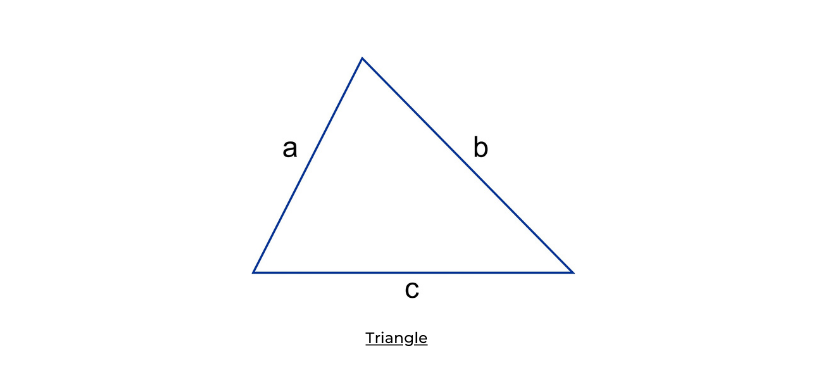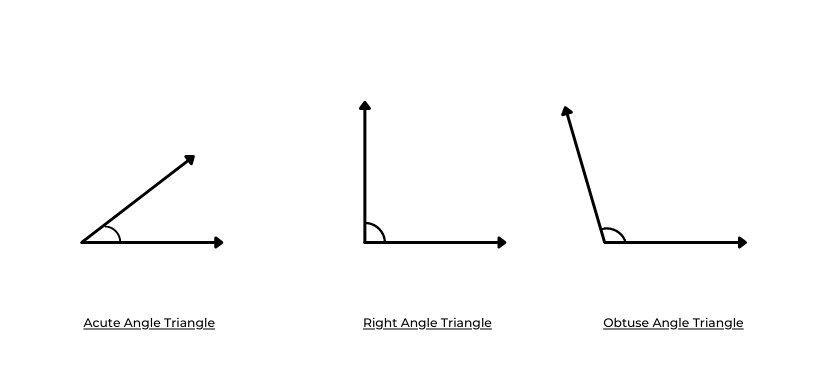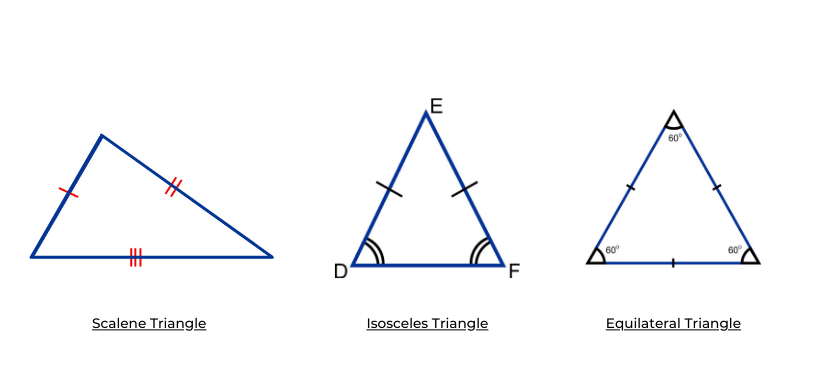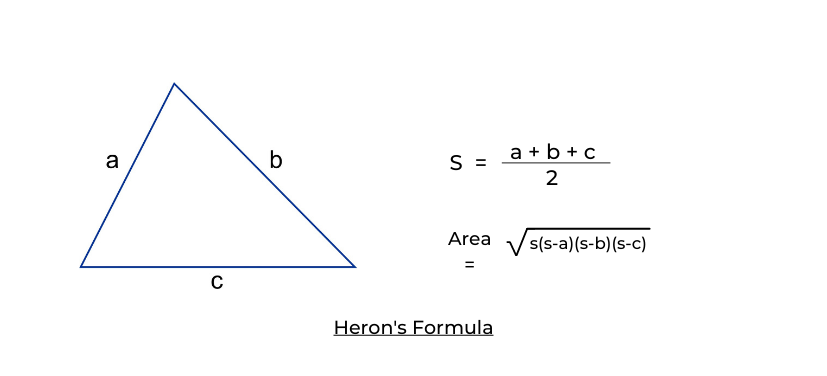What are triangles? You can easily guess the definition of the triangle by bisecting the name itself, Tri-angle! A triangle is a polygon having three angles. Triangles are basically closed figures having 3 sides, 3 vertices, and 3 angles. Geometric shapes, also called figures, are an important part of the study of geometry. Geometry�s applications in the real world include geographic information systems (for example the GPS that you use so frequently !), architecture, computer-aided manufacturing, medicine, biology, physical sciences, video game programming, and whatnot. And our topic of study here i.e. triangle is one of the basic shapes in geometry.
Definition: The triangle is a kind of polygon (a two-dimensional body having three straight sides) which is a closed figure formed by three intersecting lines. It has three sides, three angles, and three vertices as shown in the labeled diagram below:

Properties of a Triangle:
1. Angle sum property - The sum of all internal angles of a triangle is always equal to 180 degrees.
2. Triangle Inequality Property: The sum of the length of 2 sides of a triangle will always be greater than the length of the third side.
3. The side opposite to the largest interior angle of a triangle is the largest side.
4. The side opposite to the smallest interior angle of a triangle is the shortest side.
5. Any exterior angle of the triangle is equal to the sum of its interior opposite angles. This is called the exterior angle property of a triangle.
Types of Triangles
Let us now try to understand the types of triangles: Every triangle has three vertices (points at which the segments meet), three sides (the segments themselves), and three interior angles (formed at each vertex). Now we classify triangles based on the long sides and the angles formed at each of the three vertices.
Types of triangles based on angles made at the three vertices:
1. Acute Angle Triangle - A triangle that has all three angles less than 90 degrees is an acute angle triangle, which means all the angles of an acute angle triangle are called acute angles.
2. Obtuse Angle Triangle or Oblique Angle Triangle - A triangle that has one of the three angles measuring more than 90 degrees is an obtuse angle triangle.
3. Right-Angle Triangle - A triangle that has one angle that measures exactly 90 degrees is a right-angle triangle. It naturally follows that the other two angles of a right-angle triangle are acute angles.
And the side opposite to the right angle is the largest side of the triangle and is called the hypotenuse. In a right-angled triangle, the sum of squares of the perpendicular sides is equal to the square of the hypotenuse, i.e. the Pythagoras theorem: (AC)2 + (CB)2 = (AB)2

Types of triangles based on the length of sides with respect to each other:
1.Scalene triangle � When a triangle has all three sides of different lengths, it is called a scalene triangle. Important to remember is that since all three sides are of different lengths, the three angles will also be different.
2. Isosceles triangle - A triangle that has two sides of the same length and the third side of a different length is an isosceles triangle. The angles opposite to the equal sides measure the same.
3. Equilateral triangle - A triangle that has all three sides of the same length is an equilateral triangle. Since all three sides are of the same length, all the three angles will also be equal. Each interior angle of an equilateral triangle = 60 degrees

Area of a Triangle
The space enclosed by the three sides of a triangle is actually known as its area. It can be calculated in multiple ways, like through the base and height of a triangle, through Heron�s Formula, through trigonometric functions, etc. Here we are going to deal with the �base and height method� and Heron�s formula for finding the area of a triangle.
Let us now try to know about the height and base of the triangle.
Every triangle has three possible heights or altitudes because every triangle has three sides. Any of the three sides of a triangle can be considered the base of the triangle. So, a triangle�s height is the length of a perpendicular line segment drawn from the base to its opposite vertex. From this, it can be said that:
1. The height of a triangle corresponds to its base. If the base changes, so do the height.
2. The base of a triangle is always perpendicular to its height
3. The height of a triangle is the shortest line onto the base from its opposite corner/vertex.
5. The height of a triangle may be outside the triangle
Using the base and height of a triangle, its area can be given as Area = 1/2 x base x corresponding height
Heron�s Formula: It is used when the lengths of all three sides of a triangle are known:

Area of triangle = ?s(s-a) (s-b)(s-c)
Where: a, b, c are the three given sides of a triangle and p is the semi-perimeter or [(perimeter of the triangle)/2]
Perimeter of a triangle = a+b+c, such that semi-perimeter = (a+b+c)/2


Leave your comment